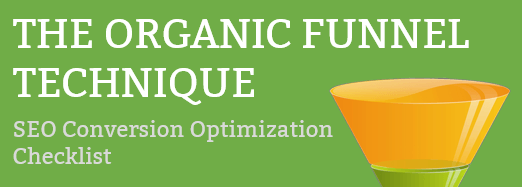
Have you ever noticed that your once top-performing content doesn’t bring in the traffic it used to?
That’s content decay in action—a slow, gradual decline in your content’s performance, and it’s an issue many businesses face.
This blog post promises to not only explain the phenomenon of content decay but also to equip you with actionable strategies to revitalize your content and restore its former glory.
Understanding Content Decay
The Lifecycle of Online Content
Content decay is the inevitable phase in the lifecycle of online content where, after a period of peak performance, the traffic and engagement levels start to diminish. It’s a natural process, as information becomes outdated, audience interests shift, and new, competitive content emerges. Content decay is part of the toolset you need to use in content analytics.
The lifecycle of online content is a dynamic journey that starts the moment a piece of content is conceived and continues through its creation, publication, promotion, performance monitoring, and eventual decline. This lifecycle is essential for content creators and marketers to understand because it influences how they manage their content strategy over time.
Let’s delve deeper into each stage of the lifecycle of online content.
1. Conception and Planning
This initial stage is where ideas are born. Content creators brainstorm topics, conduct keyword research, and define the goals for the content. It’s crucial to align the content with the audience’s needs and interests and the business’s marketing objectives.
2. Creation
Here, the actual content is produced. This process involves writing articles, recording videos, designing infographics, or developing any other form of content. The creation phase requires attention to detail, creativity, and a keen sense of what resonates with the target audience.
3. Publication
Once the content is created, it’s time to publish. This stage involves choosing the right platforms—be it a blog, social media, email newsletters, or other channels—and scheduling the content for release.
4. Promotion
After publication, the content must be promoted to reach the target audience. This can be through SEO, social media marketing, email campaigns, paid advertising, or any combination of methods that ensure the content gets in front of as many relevant eyes as possible.
5. Engagement and Interaction
As the audience interacts with the content, this phase focuses on measuring engagement through comments, shares, likes, and other forms of interaction. It’s a critical period where the content’s value is actively assessed by the audience.
6. Performance Monitoring
Using analytics tools, content creators monitor the content’s performance in terms of traffic, conversion rates, bounce rates, and other relevant metrics. This data helps us understand what content works well and what doesn’t.
7. Peak Performance
This is the golden phase where the content is most productive, driving maximum traffic, generating leads, and achieving its intended goals. It’s a testament to the content’s relevance, quality, and effectiveness.
8. Saturation and Onset of Decay
Over time, even the best content can reach a point where it no longer performs as it once did. This could be due to market saturation, newer content from competitors, changes in search algorithms, or shifts in audience preferences.
9. Decline (Content Decay)
In this stage, content decay sets in. The decline may be gradual, but it’s often steady, resulting in decreased visibility and effectiveness. It’s a clear signal that the content needs re-evaluation and possible rejuvenation.
Identifying Content Decay
Recognizing the Signs
To fix content decay, you first need to identify it. Signs include a drop in organic traffic, lower rankings on search engines, and a decrease in conversions. Regular audits of your content’s performance are crucial for early detection.
Factors Contributing to Declining Content Performance
Multiple factors can contribute to content decay, such as changes in search engine algorithms, evolving market trends, or simply the aging of information. Keeping content fresh and relevant is an ongoing battle against these elements.
Recognizing content decay is an essential aspect of managing a digital presence, as it signals a need to update or improve your online materials to keep them relevant and effective. One of the most telling signs of content decay is a consistent drop in organic traffic. By utilizing analytics tools, you can observe trends and identify when your content is no longer attracting visitors at its former rate.
Engagement metrics offer another window into content performance, with a decline in interactions such as shares, comments, or likes pointing towards content that may no longer resonate. Similarly, if your content begins to slip down the search engine rankings for previously strong keywords, it’s often an indicator that your content is losing its SEO footing.
Outdated information within your content is a more straightforward symptom of decay. When statistics, events, or best practices mentioned in your content no longer reflect the current landscape, the value and relevance of your content to the reader diminish. The subsequent impact of outdated content is often visible in conversion rates; a piece of content that once successfully generated leads or sales but now fails to do so suggests that it’s no longer meeting the needs or interests of your audience.
User behavior metrics can also signal content decay. An increase in bounce rates or a decrease in time spent on a page may indicate that visitors aren’t finding what they expected or that the content isn’t engaging enough to retain their attention. Feedback from users, whether direct comments or through observed changes in how they interact with your site, can also provide critical insights into the relevance and effectiveness of your content.
Lastly, it’s important to keep an eye on the competitive landscape. If competitors begin to outshine your content with fresher, more comprehensive, or higher-ranking information, it can lead to a natural decline in your content’s performance.
Analyzing the Impact of Content Decay
Measuring the Consequences of Content Decay
The impact of content decay can be significant, leading to lost traffic, reduced lead generation, and potentially decreased revenue. By quantifying these effects, you can prioritize which content to refresh based on potential ROI.
Utilize tools like Google Analytics or Moog.ly to track the performance of your content over time. Look for a pattern of declining organic traffic, which is a primary indicator of content decay. A sudden drop might be due to search engine algorithm changes or seasonal fluctuations, but a consistent downward trend usually points to decay.
Observe the rankings for the keywords your content is targeting. If your content is consistently dropping in search engine result pages (SERPs) for important keywords, this could be a sign of content decay.
Measuring content decay is critical for maintaining an effective content strategy. By regularly analyzing these metrics, you can identify content decay early and implement strategies to refresh and optimize your content, ensuring it continues to achieve your marketing goals and resonate with your audience. Remember to consistently review and update your content to prevent decay from undermining your online success.
Reviving Your Content
Strategies to Combat Content Decay
Reviving content requires a multifaceted approach. Update outdated statistics, inject new life with current trends, optimize for the latest SEO practices, and perhaps repurpose content into new formats to appeal to a broader audience.
Manually check your content for outdated facts, statistics, or references. Content that isn’t regularly updated can become less useful to readers and can be penalized by search engines.
Metrics like Google’s Engagement Rate and average time on the page can provide insights into user behavior. An increase in bounce rate or a decrease in time spent on the page can indicate that visitors aren’t finding the content useful or engaging.
The Role of SEO in Content Longevity
As a marketer, your content creation strategy may need to be revised. If your business is constantly putting out new content, you are missing a large SEO opportunity. Most likely you have evergreen content that people will visit multiple times because of its usefulness. Evergreen content refers to content that remains relevant and fresh for readers over a long period of time. Unlike news articles or trending topic pieces that have a short lifespan, evergreen content continues to be valuable to readers months or even years after it was originally published. The term “evergreen” is borrowed from the type of trees that retain their leaves all year round, symbolizing the perennial nature of the content.
Ensuring Your Content Stays on Top
SEO isn’t a one-time setup; it’s a vital, ongoing process. Regularly revisit your keyword strategy, ensure meta tags are current, and check that your content aligns with the search intent of your audience to mitigate the effects of content decay.
Creating evergreen content, the type that stands the test of time and remains relevant long after it’s published is a strategic endeavor crucial for maintaining a vibrant and valuable online presence. The first step in this process is selecting topics that possess a timeless appeal. These topics should resonate with your audience’s persistent interests and concerns, steering clear of the ephemeral nature of news or trending statistics.
Once a topic is chosen, the next step involves diving into keyword research. This involves utilizing various tools to unearth terms and phrases that maintain a consistent search volume over time. Targeting long-tail keywords can be particularly beneficial, as they tend to be less competitive and more specific, often providing a steady stream of targeted traffic.
With the groundwork laid, the focus then shifts to the content’s quality and depth. Evergreen content needs to be authoritative and thorough—striving to be the definitive source on the given topic. This includes a complete exploration of the subject matter, touching upon all relevant aspects while ensuring the writing remains engaging and well-structured.
Despite the depth, it’s critical that the content remains approachable, even to those new to the subject. This means eschewing complex jargon in favor of simple, straightforward language and breaking down intricate concepts into digestible pieces.
Search engine optimization must not be neglected, as the content’s longevity is partly hinged on its visibility within search engine results. Thus, incorporating the right keywords, meta descriptions, and a logical hierarchy of headings is essential for SEO and the user’s navigational experience.
The structure of the content is just as important as the information it contains. The use of headings, lists, and bullet points is encouraged to improve readability and scannability. This structural consideration ensures that users can quickly locate the information they need, enhancing the user experience.
Lastly, even evergreen content is not immune to the passage of time and may require occasional updates to remain accurate and relevant. Changes in laws, industry standards, or technological advancements may necessitate revisions, and plans should be in place for periodic content reviews.
The Power of Repurposing
Breathing New Life into Old Content
Transforming an old blog post into a podcast episode, an infographic, or a video series can extend its lifespan. Repurposing isn’t just about changing the format; it’s about expanding the reach and giving your content a second chance to shine.
Creating a Content Refresh Plan
Maintaining Momentum Against Content Decay
Develop a schedule for reviewing and refreshing content. Prioritize evergreen topics that have historically driven traffic and align with your business objectives, and ensure that your content calendar includes regular updates.
The Promise of Continuous Improvement
A Commitment to Ongoing Content Excellence
The battle against content decay is continuous. By committing to regular updates, staying informed of industry changes, and listening to your audience, you can maintain a robust and effective content strategy.
Conclusion
Your Invitation to Join the Discussion
Content decay might seem like an insurmountable problem, but it’s a natural part of content marketing that you can manage with the right strategies. By staying vigilant and being willing to update and adapt your content, you can keep your content fresh and engaging for years to come.
Have you experienced content decay? What tactics have you used to combat it? Share your stories and strategies in the comments below to join the conversation.


